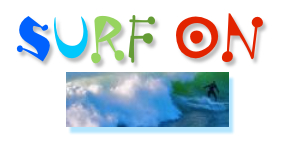This blog posts on Mondays. Second Mondays of the month I devote to my writing workshop students and anyone else interested in creative writing. Welcome!
> For the archive of workshop posts click here.
BY C.M. MAYO — September 12, 2021
UPDATE: This blog was then entitled Madam Mayo (2006-2022).
Well, gollygoobernation, it had seemed to me to have gotten a bit boring out there this summer with everyone everywhere all anxious about things, and everything else, too. But hark! I have found an exception! One self-described Swiss “sporty dude” whose name is Fabian, and who, a few days go, jumped clear off the Matterhorn in a wingsuit.
Dude! Danke sehr! Apropos of this week’s Madam Mayo blog writing workshop post, you have modeled the concept of precisely how it feels (among other things I could list but I won’t) to publish a book!
This Monday finds me working on my Far West Texas book, so herewith, a post from the archives, which I hope might inspire you to prepare for your own eventual leap, metaphorically speaking, from your own personal Matterhorn. Stitch your wingsuit well.
NATURE & TRAVEL WRITING
FOR THE VIVID DREAMER
A handout with examples & exercises
from C.M. Mayo’s writing workshop given as Artist-in-Residence,
Guadalupe Mountains National Park, Texas, May 2017
We can think of the best writing about nature and travel, whether fiction or nonfiction, as instructions for the reader to form in his or her mind a “vivid dream,” an experience of the world. How do we, whether as readers, or as any human being (say, folding laundry or maybe digging for worms with a stick), experience anything? Of course, we experience the world through our bodies, that is to say, through our senses: sight, smell, taste, touch, hearing-and I would add a “gut” or intuitive sense as well.
From John Gardner’s The Art of Fiction:
“In the artist’s recreation of the world we are enabled to see the world.”
(See my post “Techniques of Fiction: The Number One Technique from the Supersonic Overview” and Recommended Books on Craft.)
From Kenneth White’s Across the Territories: Travels from Orkney to Rangiroa:
“[Y]ou have to go out. You have to open space, and deepen place.
Fill your eyes with the changing light.”
From a letter by Anton Chekov:
“In descriptions of nature one should seize upon minutiae, grouping them so that when, having read a passage, you close your eyes, a picture if formed. For example, you will evoke a moonlit night by writing that on the mill dam the glass fragments of a broken bottle flashed like a bright little star, and that the black shadow of a dog or a wolf rolled along like a ball…”
(See my post on emulation-permutation exercises.)
From Bruce Berger’s The Telling Distance: Conversations with the American Desert:
“Silence and slow time out of ancient seabeds, the sandstone heaved into red walls blackened with lichen and rain, stained with the guano of hawks and eagles.”
From Gary Paul Nabhan’s Desert Terroir: Exploring the Unique Flavors and Sundry Places of the Borderlands:
“I rub a few leaves between my thumb and forefinger, and their fragrance suddenly pervades the dry air, as if I had just broken a bottle of perfume against one of the sharp basalt rocks at my feet.”
From Mariano Azuela’s The Underdogs (Los de abajo):
“Below, at the bottom of the canyon, through the veil of rain, could be seen straight, swaying palms, their angled tops rocking back and forth until a strong gust of wind blew their foliage open into green fans.”
From Ellen Meloy’s Eating Stone: Imagination and the Loss of the Wild:
“…day’s end pulls the buttery sunlight out of the canyon but does not lessen the furnace effect. High walls of stone hold a radiating heat that will last nearly until morning. I place my sleeping pad close to the river’s edge to make use of the swamp cooler effect. It is not usual to wake up, walk a few yards, and slip into the cool garment of night water.”
From Terry Tempest Williams’ The Hour of Land: A Personal Topography of America’s National Parks (from the chapter on Big Bend National Park):
“The desert is most alive at night… A flurry of moths becomes a white-winged blizzard; stalks of sotol glow like lit tapers on either side of the road. For eighty miles, we never pass a car.”
From Susan Shelby Magoffin’s diary of 1846-47, Down the Santa Fe Trail and into Mexico:
“Passed a great many buffalo, (some thousands) they crossed our road frequently within two or three hundred yards. They are very ugly, ill-shapen things with their long shaggy hair over their heads, and the great hump on their backs, and they look so droll running.”
(See my blog post about this extraordinary diary)
THREE BRIEF EXERCISES
TO REV UP YOUR WRITERLY PERCEPTIONS
Here I provide my own answers from when I was walking a few days ago on Pine Springs Trail late in the afternoon. About half way down the trail, I stopped, sat down on a handy bench, and did these three exercises in my notebook. You can do this right now—or, perhaps at some moment while you are on a hike today.
Note: This is not necessarily about writing some splendid polished bit, but rather, simply noticing detail and capturing it on paper. In other words, you’re generating raw material you might use later.
HUNT THE COLORS
Pick an area that most people would decribe with one color,
say, a yellow wall, or a green hillside.
How many colors do you actually see?
Here’s what I got:
evergreen
kelly green
mint green
straw green
grey-green
lavender-green
khaki
silvery green
TRIANGLE IN SPACE
What two things do you notice in the distance?
What two things do you notice very close to you?
What two things do you notice behind you?
Here’s what I got:
In the distance:
The hillside with bands of shadow
Nearby:
Birdsong; shadow of the sumac tree
Behind:
Sounds of cars and trucks on the highway;
a cloud that looks like a squished frog
LIGHT & DARK
Where is the light coming light?
What effects does it cause?
The sun is low, almost 2/3 of the way from the top of the sky to the edge of the mountains; it is on my left, which is west.
Shadows: falling to my right. Sumac tree casts a shadow that alsmot seems to have polkadots, like lace. It is shivering. The ovals of light shine like coins. One side of the sumac is sunny, bright, the other looks gray and cold.
The sotol plant across the path—it’s shivering. It’s tips are silvered as if wet.
*
See also “Giant Golden Buddha” & 364 More Free 5 Minute Writing Exercises and Recommended Literary Travel Memoirs and a whole cornucopia of other free resources for your writing.
I welcome your courteous comments which, should you feel so moved, you can email to me here.

Shake It Up with Emulation-Permutation Exercises
Selected Cabeza de Vaca Books, Part II:
Notes on Narrative Histories and Biographies
Journal of Big Bend Studies: “The Secret Book by Francisco I. Madero”





